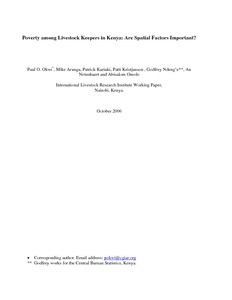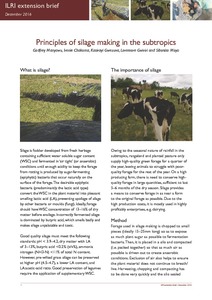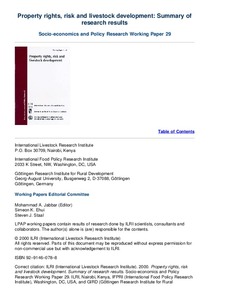Poverty among livestock keepers in Kenya: Are spatial factors important?
Press the button: online/offline mobile applications in an agricultural context
In many developing countries, smartphone and internet usage has become a revolution for the population and has opened up many possibilities to use new services for communication purposes. For researchers and development organizations, it is now possible to engage more directly with beneficiaries during the implementation phase of a project. However, many regions still face the problem of a non-existent or unreliable internet connection, which is why mobile applications have to be able to work offline as well as online.
Programa de Ganado de Carne: Informe de 1978
Proyecto CIAT laderas América Central: reportes de progreso 1997
Questions d'ordre general sur l'evaluation d'impact
This introductory paper raises general issues and poses questions that are pursued in the other papers. The initial premise of this paper is that impact cannot be discussed in isolation from the broader context of research and development and the overall priorities guiding the centres research, training, and networking activities.
Reducing forest emissions in Southeast Asia: A review of drivers of land-use change and how payments for environmental services (PES) schemes can affect them
Regional nitrogen budget of the Lake Victoria Basin, East Africa: Syntheses, uncertainties and perspectives
Using the net anthropogenic nitrogen input (NANI) approach we estimated the N budget for the Lake Victoria Basin in East Africa. The NANI of the basin ranged from 887 to 3008 kg N km?2 yr?1 (mean: 1827 kg N km?2 yr?1) for the period 1995–2000. The net nitrogen release at basin level is due primarily to livestock and human consumption of feed and foods, contributing between 69% and 85%.






